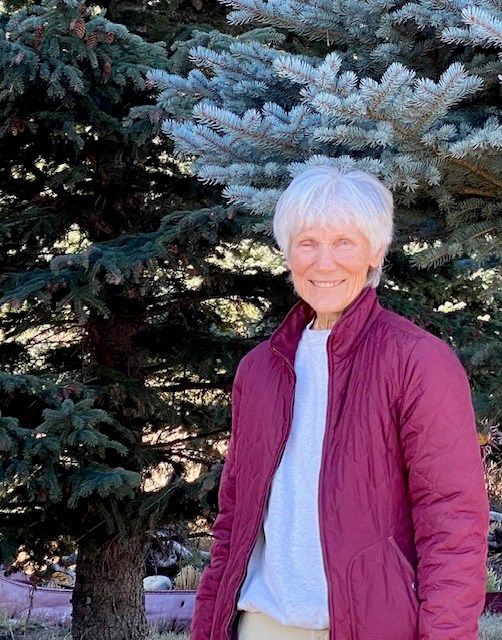Part of a series of articles titled Women's History in the Pacific West - Columbia-Pacific Northwest Collection.
Previous: Elizabeth Cant
Next: Annie Hall Strong
Article

Photo courtesy of Elizabeth Horn.
For nearly six decades Elizabeth L. Horn, a plant ecologist, has been connected to Crater Lake National Park. She began what she called her “long love affair with this fascinating landscape” during the 1960s.1 Her research on plant succession on the Pumice Desert along the Park’s North Entrance Road has continued for decades, informing how the park has preserved and interpreted this area.2
Elizabeth Laura Mueller was born in 1942 in Gary, Indiana, to Melvin W. Mueller and Adah H. Letz.3 She attended Crown Point High School, where she was a member of both the National Honor Society and Future Teachers of America.4 Horn earned her BA in biology from Valaparaiso University in Indiana, and then attended Purdue University for her graduate work in plant ecology. During 1964 and 1965 she worked as a seasonal ranger naturalist at Crater Lake National Park. It was during her time in graduate school that she began her ecological study of the Pumice Desert.5 The Pumice Desert is a five-square-mile dry meadow on the north side of the park surrounded by lodgepole pines. Its porous volcanic deposits limit plant succession, creating a harsh environment with few plant species. Richard Brown, the Biologist at Crater Lake, initially encouraged her to pursue the project.6 Horn performed a vegetation, climatic, and soil analysis of the area, in which lodgepole pines had only recently appeared. In her analyses, she found only fourteen species in the studied plots that possessed adaptations to survive in this particular soil, species that covered only 5 percent of the surface.7 She graduated from Purdue University in 1966, with a Master’s thesis based on her work at Crater Lake.8 That same year she began a 30-year career with the US Forest Service.9 She met Kirk Malcom Horn, a biologist who specialized in wildlife, at Crater Lake where he worked during the summers.10 They married in 1968 and had one daughter.11
Beth and Kirk often collaborated on their research. Kirk taught biology at a local high school and at Mount Hood Community College and Beth was an instructor at Central Oregon Community College. They then had memorable careers with the U.S. Forest Service, first in Oregon and then in Washington D.C. and Montana. Beth Horn continued to monitor the plants in the Pumice Desert and began larger studies of Northwestern native plants. She published several popular wildflower guides for the Cascade and Sierra Nevada mountains, as well as the Oregon coast.12 She hiked extensively in the region, where she “chased after various plants” in order to record them for her books.13 Many of her wildflower guides went into multiple editions. Beth Horn was later a botany instructor at Central Oregon Community College.14 The Horns both retired from the Forest Service in 1999 and moved to West Yellowstone, where they continued to explore the outdoors together until Kirk’s death in 2019.15
Horn returned to the Pumice Desert to monitor the vegetation changes even after her retirement, resurveying the same plots in 1977, 1995, 2000, and 2005.16 Her research showed that the number of trees nearly tripled during the forty-year period, indicating a slow plant succession. She authored an unpublished document titled “A Sliver in Time: Fifty Years on the Pumice Desert, Crater Lake National Park” for Crater Lake NP; it depicts paired photos from 1965 and 2015 to show change over time.17 Horn and her husband have participated in nature groups during their retirement in West Yellowstone, including the West Yellowstone Birding Trail Committee and the Audubon Christmas Bird Count. Horn has also taught courses on wildflowers and native shrubs for people to plant in their gardens.18 Horn’s love of plants and decades of work at Pumice Desert have expanded the understanding of the ecology of Crater Lake, and her publications continue to inform those who love exploring the Pacific Northwest.
Part of a series of articles titled Women's History in the Pacific West - Columbia-Pacific Northwest Collection.
Previous: Elizabeth Cant
Next: Annie Hall Strong
Last updated: February 22, 2022